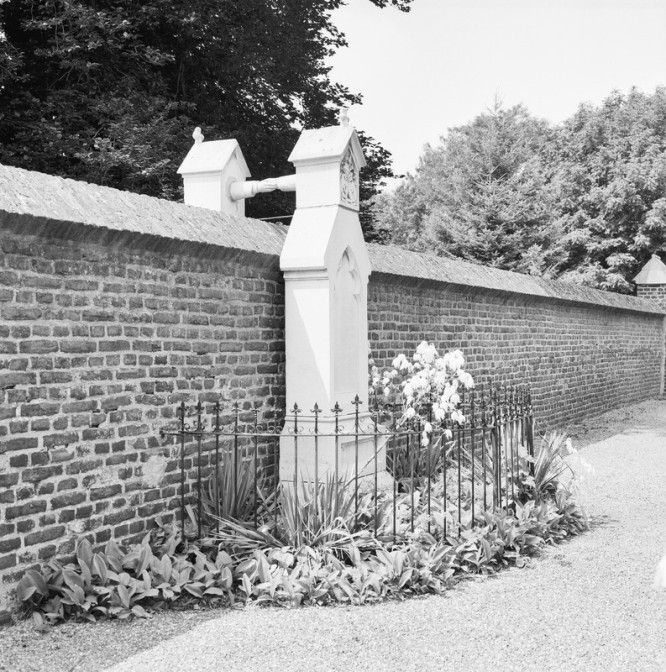
Graves holding hands. Credits: Rijksdienst voor het Cultureel Erfgoed (CC-BY-SA)
This monument tells a remarkable tale of two people whom not even death could separate.
When Lady Josephina Caroline Petronella Huberina van Aefferden died in 1888, she could not be buried next to her husband, Cavalry colonel Jacob Werner Constantinus van Gorkum. He had died eight years before, and had been buried in the Dutch Reformed Cemetery of Roermond in Limburg. As a Roman Catholic, Lady Josephina was not allowed to lie next to her husband.
In a great example of Dutch practicality, her grave was built on the opposite side of the wall seperating the Dutch Reformed from the Roman Catholic section. Their grave markers reach across the wall, holding hands for eternity. The grave is now a scheduled monument and one of the most famous graves in the country.
What a remarkable way to get around the bureaucracy that prevented them from lying side-by-side!
Sources
- “Monumentenregister,” Rijksdienst voor het Cultureel Erfgoed (http://monumentenregister.cultureelerfgoed.nl : accessed 20 April 2016), entry for monument 520489.
- “Personen zoeken,” index, WieWasWie (http://www.wiewaswie.nl : accessed 20 April 2016), entries for Gorkum and Aefferden.


That is so cool. Thanks for sharing. I’d love to go see this!